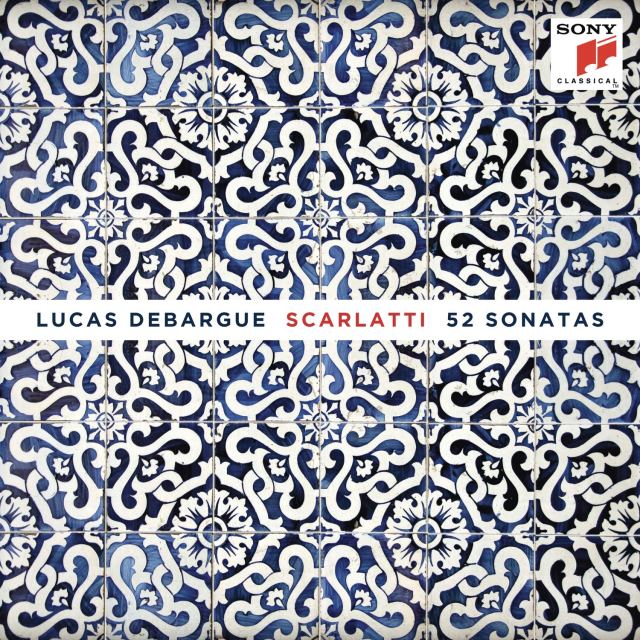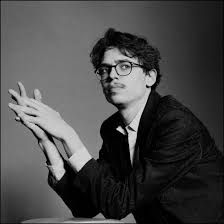
Hanzhi Wang with her Pigini concert accordion (publicity photo from the internet)
On the first day of February, on a sunny day in Santa Barbara, rising star Hanzhi Wang presented a solo recital in Hahn Hall at the matinee hour of 4PM. Despite the beautiful weather a substantial crowd gathered for this event which was part of the always notable UCSB Arts and Lectures series.
This young performer only recently came to this writer’s musical radar a few months ago. Subsequent research revealed her to be a marvelously accomplished musician. She earned her Bachelor’s degree at the China Central Conservatory of Music in Beijing, and her Master’s degree at the Royal Danish Academy of Music in Copenhagen as a student of Geir Draugsvoll. First Prize Winner of the 2017 Young Concert Artists International Auditions, Ms. Wang’s debut opened the Young Concert Artists Series in New York in The Peter Marino Concert at Zankel Hall at Carnegie Hall, and her Washington, DC debut opened the 40th Anniversary Young Concert Artists Series at the Kennedy Center.
Her interesting and rather eclectic program was artfully designed to showcase her strengths. One of those strengths is certainly her ability to communicate with her audience both is her brief but lovely introductions to her performances using a microphone kept near her seat as well as in her radiant persona which communicates a humility and pleasant affability. Of course the most important communication to be heard on this afternoon would be the musical.
She began with a couple of Bach pieces which, like most of his keyboard music, can be done equally well on harpsichord, piano, and now, accordion. It is here that she showed her virtuosity and interpretive skills which reflected an obvious affection for the material. Though scheduled to perform the famous Chaconne she chose instead to present these shorter, entertaining pieces.

Her Pigini concert accordion echoed the pleats in the skirt of her tasteful outfit well suited to a recitalist performing these essential works of the western musical canon. She followed these with three keyboard sonatas by Domenico Scarlatti (1685-1757)(K. 9, 159, and 146). This writer first encountered these little gems (the composer wrote over 500 of them) in the landmark recording Switched on Bach by Wendy Carlos in the 1970s and they are a delight on any concert program (though not programmed often enough). She handled these challengingly virtuosic works with seeming ease expertly adding dynamics to define these works to create a wonderfully entertaining concert experience.
Wang followed these with three pieces by another late baroque master, French composer Jean-Philippe Rameau (1683-1764). “L’ Egiptienne”, “La Livri”, and “Le Rappel des oiseau”. Her obvious affection for these works have subsequently sent this listener to seek out more of Rameau’s works. These works on the first half of the program were all characterized by her lovely playing, making a strong case for the role of this nineteenth century folk instrument’s role in the playing of classical music.
After a brief intermission Ms. Wang offered a twentieth century work by the late, great Russian composer, Alfred Schnittke (1934-1998). Though not originally for the accordion the composer did utilize this instrument in some of his works. Russian composers at least since Tchaikovsky have utilized the accordion to stunning effect. And this performance was another demonstration of this young musician’s easy virtuosity and insight offering up these brief pieces inspired by Nikolai Gogol’s novel, “Dead Souls”. The music is filled with both humor and passion with echoes of the dead souls (in Schnittke’s trademark “polytsylism”) of prior Russian composers.
The soloist’s clear understanding of the modern idiom was made very clear and one need only look to Wang’s website to see that her repertory ranges across 400 years of the western musical canon. One wonders if there is anything she can’t play well.
Her last scheduled pieces came from the late nineteenth century by a composer which Wang humorously noted eschewed the accordion, Edvard Grieg (1843-1907). The Norwegian nationalist’s famed Holberg Suite (originally for string orchestra) sounded pleasantly familiar on Wang’s instrument.
After an enthusiastic standing ovation Ms. Wang presented three more pieces, two by the late Argentinian Astor Piazzolla (1921-1992) and a piece by German composer and piano virtuoso, Moritz Moszkovsky (1854-1925). These were like gifts to the audience which further demonstrated her facility with the tango inflected Piazzola and the playful, though difficult, pianism of Moszkowski.
This young woman is indeed a rising star who belongs on your radar.

